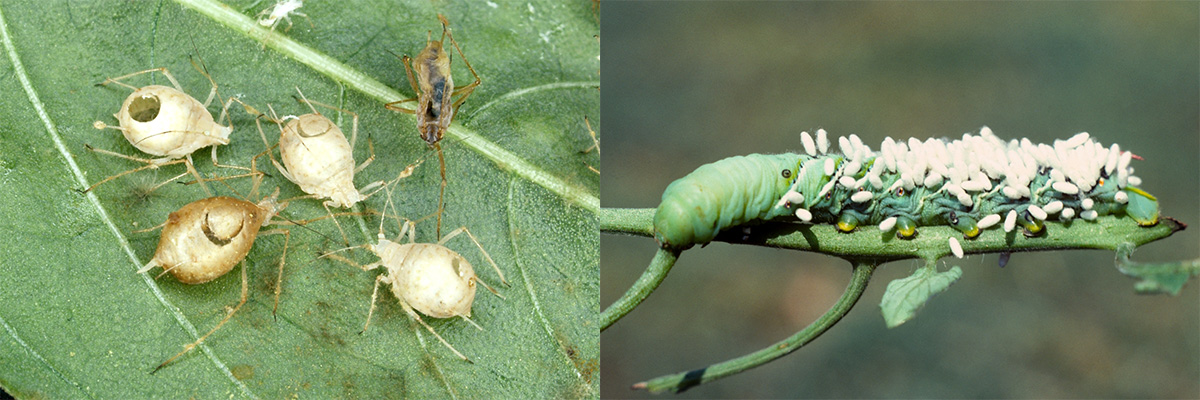
By Kait Chapman, Extension Educator in Lancaster County
Maintaining a beautiful landscape or garden is often a balancing act between conservation and pest management, whether it be responsible watering or staving off weeds. When it comes to insects on plants, finding the perfect middle ground is sometimes difficult: How does one control the “bad,” i.e., pests while keeping the “good,” i.e., pollinators?
Practicing integrated pest management (IPM) means using a variety of methods to tackle a pest problem, ultimately reducing the amount of pesticides needed. This also reduces the risk of negatively impacting non-target organisms including people, pets and beneficial bugs like pollinators. In some cases, insecticide applications may not only impact a pest, but also what preys on the pest. This could potentially cause a resurgence, with pest levels exceeding what they were pre-treatment. Thus, conserving biodiversity, or a variety of life and species, also has the added benefit of conserving predators and parasitoids, i.e., “nature’s pest control.”
Parasitoids are fascinating, albeit disconcerting, creatures. They are also similar to parasites, living and feeding on or in a host. The primary difference is that parasitoids ultimately end up killing their hosts, often feeding on them from the inside out. One of the most classic examples of parasitoids helping with pest control are small parasitoid wasps, which use their “stinger” to deposit eggs inside a host insect. The eggs eventually hatch, and the wasp’s larvae will eat the host alive, until the wasps are ready to complete their development and emerge as adults.